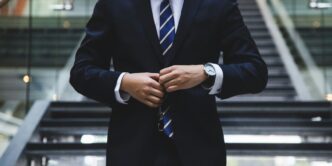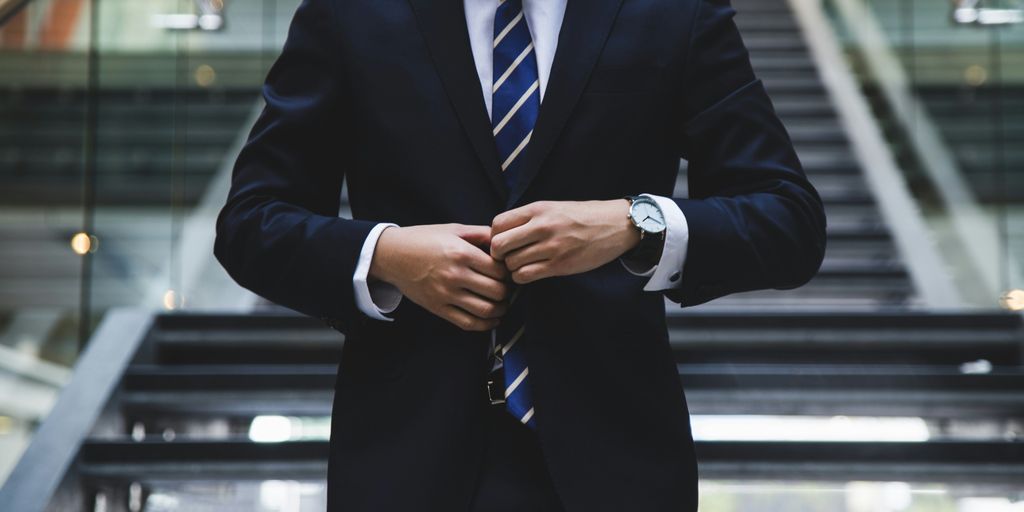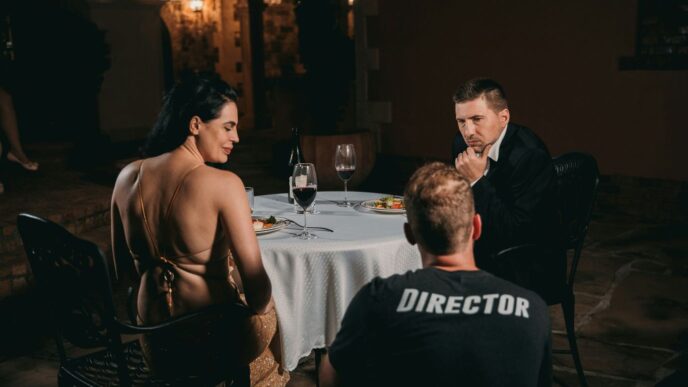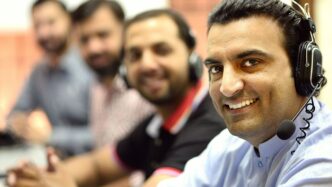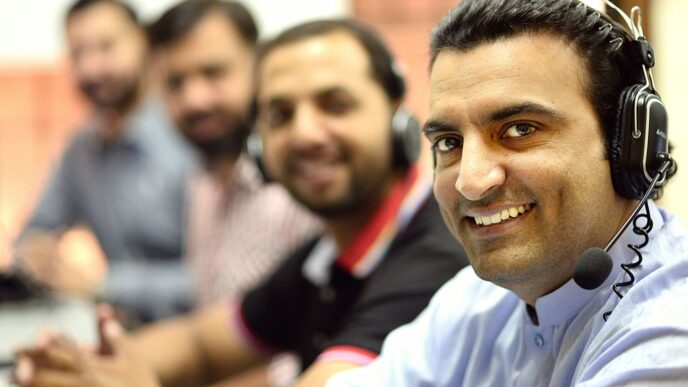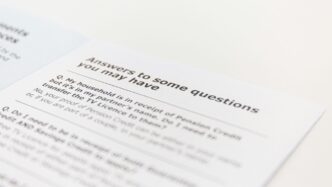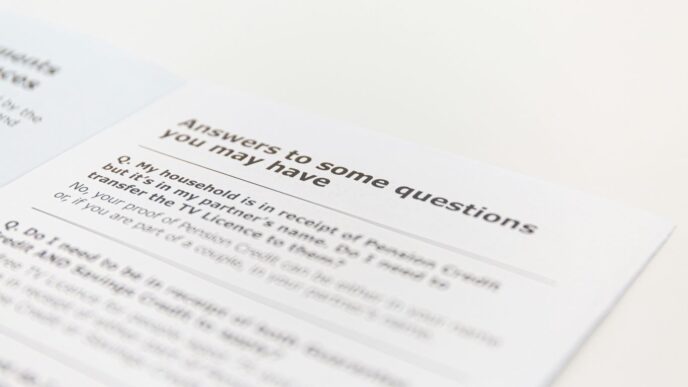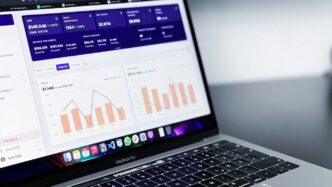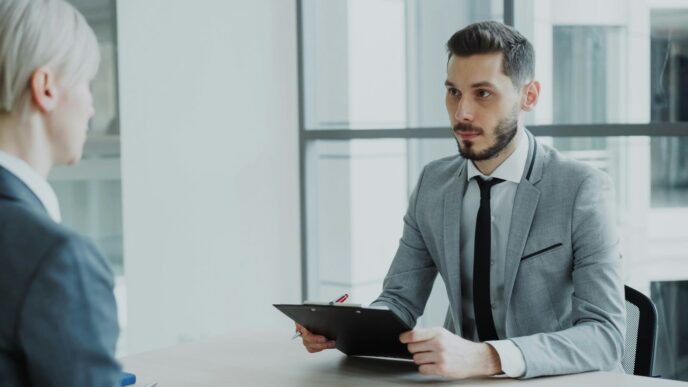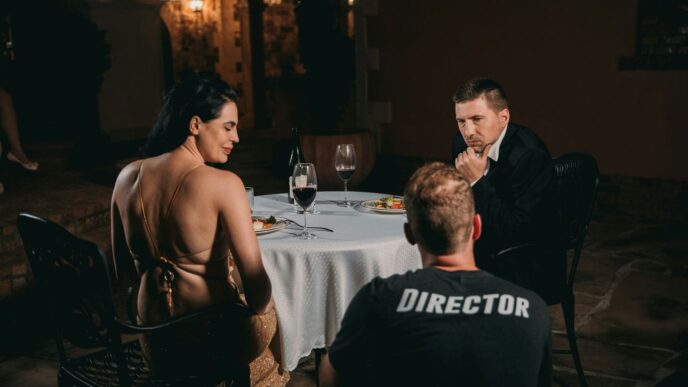Getting ready for a job interview can feel like a lot. You’ve probably spent hours perfecting your resume and practicing answers to common questions. But what about what you’re going to wear? It’s a big deal, honestly. Your outfit is like your silent introduction, and it can really set the tone before you even say a word. If you’re wondering what to wear to a job interview, don’t worry, we’ve got you covered. This guide will break down how to pick the right clothes so you can walk in feeling confident and looking the part.
Key Takeaways
- Always dress about 25% more formally than the company’s everyday dress code to show you’re serious.
- Make sure your clothes fit well; a good fit is more important than the brand or how expensive the item is.
- Research the specific dress expectations for the industry you’re interviewing in.
- Avoid fashion mistakes like wearing clothes that are too tight, too revealing, or have distracting patterns.
- Prepare your interview outfit the night before to avoid any last-minute stress or wardrobe issues.
Understanding the Impact of Interview Attire
First Impressions and Professionalism
So, you’ve got an interview lined up. That’s great! But before you even open your mouth to answer the first question, people are already forming opinions. And guess what’s a huge part of that? What you’re wearing. It sounds a bit shallow, maybe, but it’s true. Your outfit is often the very first thing a potential employer notices, and it can really set the tone for the rest of the meeting. Think about it – if you show up looking put-together and professional, it sends a message that you’re serious about the opportunity and respectful of their time. It’s like a silent handshake before you even meet. Research actually shows that people form these initial judgments really quickly, sometimes in just a few seconds. So, dressing appropriately isn’t just about looking nice; it’s about showing you understand the professional environment and that you’re ready to be a part of it. It’s a way to communicate your respect for the company and the role, and it can definitely help you feel more confident, too. It’s a good idea to check out company culture to get a feel for what’s expected.
The Psychology of Dressing for Success
It’s kind of wild when you think about it, but what we wear can actually change how we think and feel. This idea is called “enclothed cognition.” Basically, when you put on certain clothes, it can influence your own mindset and even how you perform. For an interview, this means that dressing in a way that feels professional and polished can make you feel more confident and capable. It’s like putting on a superhero costume, but for the workplace. When you look the part, you start to feel the part. This can lead to better focus, more self-assurance, and a generally more positive interaction with the interviewer. It’s not just about impressing them; it’s about setting yourself up for success internally, too. So, choosing an outfit that makes you feel good and look professional is a smart move.
Avoiding Costly Fashion Mistakes
We all want to make a good impression, but sometimes, in our eagerness, we can make a few missteps with our interview attire. One of the biggest pitfalls is definitely underdressing. Even if a company says they’re super casual, showing up in something too relaxed, like workout clothes or ripped jeans, can send the wrong message. It might suggest you don’t take the interview seriously. On the flip side, overdressing can also be a problem. Wearing a super formal suit to a very laid-back startup might make you seem a bit out of touch with their vibe. The key is to find that sweet spot. Another common mistake is wearing something distracting. Think really loud patterns, strong perfumes, or jangling jewelry. These things can pull the interviewer’s attention away from what you’re actually saying and what you bring to the table. It’s best to keep your outfit clean, well-fitting, and free from anything that might distract from your qualifications.
Decoding Dress Codes Across Industries
Different industries have different vibes, and what you wear to an interview should match that. It’s not just about looking good; it’s about showing you understand the company culture and respect the interview process. Think of it as speaking the company’s visual language.
Formal Business Professional Standards
This is your go-to for fields like law, finance, and traditional corporate settings. The goal here is to project seriousness, competence, and attention to detail. For men, this typically means a well-fitting suit in navy, charcoal, or black, paired with a crisp white or light blue dress shirt and a conservative tie. Leather dress shoes in black or brown are a must. For women, a pantsuit or skirt suit in a similar dark color palette is standard. A conservative blouse or shell, closed-toe pumps or flats, and minimal jewelry complete the look. Remember, the fit is everything here; a perfectly tailored suit, even if less expensive, looks far better than an ill-fitting designer one. It’s about presenting a polished, authoritative image.
Navigating Business Casual Expectations
This is where things get a bit more flexible, common in tech, marketing, and some educational roles. Business casual still means looking professional, but with a bit more room for personal style. Think chinos or dress pants, a button-down shirt or a nice polo shirt. A blazer or sport coat can really pull the look together. For women, this could be dress pants or a knee-length skirt with a blouse or a nice sweater. Clean, smart-looking shoes are important – loafers, oxfords, or professional flats work well. Avoid anything too flashy or overly casual like ripped jeans or graphic tees. The key is to look put-together and approachable, showing you understand professional norms without being overly stiff. Researching the specific company’s usual attire can be super helpful here.
Dressing Appropriately for Casual Environments
Even in more relaxed settings, like some startups or creative agencies, you still need to make a good impression. Casual doesn’t mean sloppy. Aim for
Mastering the Fit and Color Palette
Getting your clothes to fit just right is a big deal. It’s not just about looking good; it’s about feeling comfortable and confident. When your outfit fits well, it creates clean lines and doesn’t pull or bunch up in weird places. Think about it: a jacket that’s too tight or pants that are too long can really throw off your whole presentation. The goal is for your clothes to move with you, not against you.
The Importance of Proper Garment Fit
Proper fit is really non-negotiable. Your clothes should allow you to move comfortably without looking baggy. They should create clean lines without pulling or bunching, and the lengths should be just right – sleeve length, pant break, skirt hem. A well-fitting outfit makes you look polished and put-together, showing you pay attention to details. It’s like the difference between a custom suit and something off the rack that just doesn’t quite hang right. You want that second option, the one that looks like it was made for you, even if it wasn’t. It’s worth spending a little extra time or money to get alterations if needed. Remember, a $100 outfit that fits perfectly will always look better than a $1,000 outfit that doesn’t.
Leveraging Color Psychology in Your Outfit
Colors send messages, even if we don’t realize it. Certain colors can make you appear more trustworthy, sophisticated, or approachable. For instance, navy blue is often associated with trust and stability, making it a solid choice for most industries. Gray suggests sophistication and balance, which works well in professional services. Black can convey authority, but it might be too intense for some roles. Lighter colors like white or light blue often come across as clean and approachable, good for healthcare or education. It’s about choosing colors that align with the impression you want to make. You want to avoid anything too loud or distracting, like bright reds or neon colors, because the focus should be on your skills, not your outfit.
Choosing Versatile and Neutral Tones
When in doubt, stick to neutral colors. They are safe, professional, and easy to coordinate. Think about building a wardrobe with pieces in shades of navy, gray, black, white, and beige. These colors are versatile and can be mixed and matched to create different looks. A classic navy blazer, for example, can be paired with different shirts and pants. Neutral tones also help to keep the focus on you and your qualifications, rather than on a bold fashion statement. They create a calm and collected appearance, which is generally what employers are looking for. You can always add a pop of color with a subtle accessory if the industry or company culture allows, but the foundation should be neutral and professional. This approach makes getting dressed for an interview much simpler and less stressful. You can find great options for professional attire at places like department stores.
Essential Elements of a Professional Wardrobe
Building a solid professional wardrobe is like laying the foundation for your career. It’s not just about having clothes; it’s about having the right clothes that make you feel confident and present yourself well. Think of these as your go-to pieces that can be mixed and matched.
Key Investment Pieces for Your Interview Suit
When it comes to interview attire, a well-fitting suit is often the cornerstone. It communicates seriousness and respect for the process. You don’t need a closet full of suits; one or two versatile options can go a long way. For men, a classic navy or charcoal gray suit is almost always a safe bet. For women, a pantsuit or a skirt suit in a similar neutral shade works wonderfully. The key here is the fit – it should allow for comfortable movement without looking baggy, and create clean lines without pulling or bunching. Make sure the jacket shoulders align with your natural shoulder line and the sleeves hit at the right spot, usually showing about a quarter to a half-inch of your shirt cuff. Pants should have a clean break at the shoe, and skirts should hit around the knee, not too short and not too long.
Selecting Appropriate Footwear
Your shoes are just as important as your suit. They should be clean, polished, and in good repair. For most professional settings, closed-toe shoes are the standard. Men typically opt for leather dress shoes like Oxfords or Derbies in black or brown, always matching their belt. Women have a bit more flexibility, with classic pumps, loafers, or elegant flats being good choices. Aim for a heel height that you can comfortably walk in – no one wants to see you wobbling! Avoid anything too trendy, like open-toed shoes, stilettos, or sneakers, unless the industry specifically calls for it. Remember, your shoes complete the look and can either add to or detract from your overall professional image.
Accessorizing Thoughtfully
Accessories are the finishing touches, and in an interview, less is definitely more. The goal is to complement your outfit, not distract from it. Think simple and understated. For men, this might include a classic watch, a conservative tie, and a belt that matches your shoes. For women, minimal jewelry like stud earrings, a simple necklace, or a watch is appropriate. A professional bag or portfolio to carry your resume and any other necessary documents is also a must. Avoid anything that jingles, sparkles excessively, or is overly large. The aim is to look polished and put-together, and your accessories should support that image. If you have tattoos or piercings, consider how they might be perceived in the specific industry and cover them if necessary to maintain a conservative appearance. You can explore professional dress codes to get a better sense of what’s expected across different fields.
Virtual Interview Dressing Strategies

So, you’ve got a video interview lined up. It’s easy to think, ‘Hey, I’m at home, I can just throw on a t-shirt.’ But honestly, that’s a mistake. Even though they can’t see your shoes, what you wear still matters. Your appearance on screen is your first impression, and it needs to be professional. Think about it – if you can’t put effort into your appearance for a big meeting, what does that say about your work ethic?
Focusing on Your Upper Half for the Camera
Since most of the interview will be shot from the chest up, your top half really needs to shine. Solid colors tend to work best on camera. Think about blues, grays, or even a nice jewel tone like emerald or sapphire. These colors look professional and don’t tend to cause weird visual effects. Avoid anything too busy, like tight patterns or stripes, as these can create a distracting ‘moiré’ effect on screen. Also, steer clear of pure white, which can cause glare, and neon colors, which are just too much.
Avoiding Distractions on Screen
Beyond just the color and pattern of your clothes, think about other things that might pull focus. Dangling earrings or chunky necklaces can swing around and be distracting. If you have a lot of movement when you talk, maybe opt for something simpler. It’s also a good idea to test your look beforehand. Hop on a quick video call with a friend and see how you appear. Make sure your lighting is good, hitting your face evenly, and that your background isn’t a mess of clutter. A tidy, neutral background is always best. Remember, you want them focused on your qualifications, not your outfit’s quirks. For more tips on looking your best on camera, check out video interview optimization.
Ensuring a Professional Virtual Background
Your background is basically the ‘room’ you’re interviewing in, so it needs to look good. A plain wall, a bookshelf that’s organized, or even a subtle, professional-looking virtual background can work. Just make sure it’s not distracting. Avoid anything with bright colors, busy patterns, or personal items that might be TMI. Good lighting is also key. Natural light from a window facing you is usually the best. If that’s not an option, a simple lamp can help. Test your setup before the interview day so you’re not scrambling at the last minute. It really does make a difference in how polished you come across.
Grooming and Final Presentation Touches
Beyond the clothes themselves, how you present yourself overall makes a big difference. It’s about the little things that show you’ve put in the effort. Think of it as the finishing touches that tie your whole look together.
DIY Professional Grooming Techniques
Getting ready for an interview doesn’t always mean a trip to the salon. You can handle a lot of the prep yourself. For your hair, looking up some simple styling tutorials on YouTube can give you ideas for neat, professional looks that aren’t too fussy. Nails are another area where a little DIY goes a long way. A quick at-home manicure, making sure nails are clean and trimmed, can really polish your appearance. Don’t forget your clothes; simple tips for keeping garments looking fresh, like quick steaming or ironing, can make a huge impact. And yes, even your shoes can get a DIY refresh with a good polish. It’s all about presenting a clean, put-together image.
Maintaining Impeccable Grooming Standards
When it comes to interview grooming, the goal is to look polished and professional without being distracting. Hair should be neat and styled conservatively; avoid anything that looks messy or overly trendy. If you have facial hair, make sure it’s well-trimmed and neat. Your nails should be clean and kept short, with neutral polish if you choose to wear any. Avoid chipped polish at all costs. Fragrance is another area to be cautious with; a very light scent is okay, but strong perfumes or colognes can be off-putting to some. Keep your makeup natural and understated, and ensure your breath is fresh. These details show you’re mindful of your appearance and considerate of others.
The Role of Confidence and Attitude
Ultimately, how you carry yourself is just as important as what you wear. Confidence is your best accessory. When you feel good about how you look, it shows in your posture and how you interact with people. Stand tall, make eye contact, and offer a firm handshake. Your attitude should be positive and engaged. Remember that your attire is meant to support your qualifications, not overshadow them. Dressing appropriately and feeling confident helps you focus on what truly matters: showcasing your skills and experience. It’s about presenting the best version of yourself, both inside and out, and showing you’re ready for the job. For more on making a great first impression, check out company dress code research.
Special Considerations for Interview Attire
Dressing for Seasonal Changes
When you’re heading into an interview, the weather outside can really throw a wrench in your plans if you’re not prepared. For those chilly winter months, think about layering. A smart wool coat over your suit or professional outfit is a good idea. Make sure your shoes can handle a bit of snow or rain, and maybe keep a small umbrella handy. Nobody wants to show up with soggy shoes or a dripping coat. In the summer, it’s about staying cool but still looking sharp. Lighter fabrics are your friend, but avoid anything too casual like t-shirts. If it’s really hot, you might consider a lighter-weight suit or separating your suit pieces. Always have a plan for how you’ll manage the temperature transition from outside to inside the interview room.
Accommodating Religious or Cultural Attire
It’s totally okay to wear attire that reflects your religious beliefs or cultural background. The key is to make sure it still looks professional and fits the interview setting. If you wear a headscarf, hijab, or other religious headwear, ensure it’s neatly arranged and complements your outfit. Similarly, if your culture calls for specific garments, make sure they are clean, well-pressed, and don’t detract from your professional image. It’s about showing respect for your own identity while also demonstrating respect for the potential employer. If you feel it’s necessary, you can briefly mention how your attire aligns with your practices, but usually, it’s not needed. Just wear it with confidence. You can find more information on workplace rights and accommodations at the Equal Employment Opportunity Commission.
Preparing for Multiple Interview Rounds
So, you’ve got more than one interview with the same company? That’s great news! It means they’re interested. But it also means you need to think about your wardrobe for each stage. You don’t want to wear the exact same outfit for every single meeting, especially if you’re meeting different people. Having two or three solid interview outfits ready to go is a smart move. Try to vary your look a bit each time – maybe swap out the tie, wear a different color shirt, or switch from a skirt suit to a pantsuit. This shows you’re put-together and thoughtful. Keep a little note of what you wore to the first interview so you don’t repeat yourself too obviously. The goal is to maintain that consistent professional impression throughout the entire process.
The Pre-Interview Appearance Checklist
Getting ready for an interview isn’t just about knowing the answers; it’s also about presenting yourself polished and prepared. Think of the night before and the morning of as your final dress rehearsal. A little bit of planning goes a long way in making sure you walk in feeling confident and looking your best.
Outfit Preparation the Night Before
Lay out your entire outfit the evening before your interview. This includes your clothes, shoes, and any accessories like jewelry or a watch. Make sure everything is clean, pressed, and free of wrinkles or stray threads. Check your shoes – are they polished and in good repair? It’s also a good idea to have a backup option ready, just in case something unexpected happens to your primary choice. This prep work eliminates morning rush stress and potential wardrobe malfunctions.
Final Checks on the Morning Of
When you wake up, give your outfit a final once-over in good lighting. Check for any last-minute spots or wrinkles you might have missed. Make sure your hair is neat and your grooming is complete. A quick mirror check before you head out the door can catch anything you might have overlooked. Remember to pack any necessary items, like a notebook and pen, or your emergency kit.
Assembling an Emergency Interview Kit
It’s smart to have a small kit ready for unexpected issues. This can be a small pouch or bag that fits easily into your briefcase or purse. Consider including items like:
- Safety pins: For quick fixes on clothing.
- Stain remover pen: To tackle any accidental spills.
- Breath mints: For a fresh feeling before you meet anyone.
- Lint roller: To quickly remove fuzz or pet hair.
- Small sewing kit: For minor clothing repairs.
- Clear nail polish: To stop a run in hosiery or secure a loose button.
Having these items on hand can save you from minor wardrobe disasters and help you maintain a professional appearance throughout the day. For more on preparing your presentation, you might find resources on video training helpful for practicing your delivery.
Final Thoughts: Dress for the Job You Want
So, we’ve covered a lot about what to wear for that all-important interview. Remember, your outfit is like your silent introduction – it speaks volumes before you even say a word. It’s not just about looking good; it’s about showing you respect the opportunity and the people you’re meeting. Stick to the basics: research the company, make sure your clothes fit well, and always aim to be a little more dressed up than the everyday office vibe. Avoid anything too flashy or distracting. And hey, if you’re going virtual, the same rules apply – just focus on what the camera sees. Preparing your outfit the night before can really cut down on stress. Ultimately, feeling good in what you wear will help you feel more confident, and that confidence is your best accessory. Go out there, dress smart, and nail that interview!
Frequently Asked Questions
How do I know what kind of clothes to wear?
Think about the company’s usual vibe. If people usually wear jeans and t-shirts, you should dress a little nicer, like with slacks and a collared shirt. If it’s a fancy place like a bank, wear a full suit. When in doubt, it’s always safer to dress a bit more formally than you think you need to.
Does the way my clothes fit really matter?
Yes, your clothes should fit well. Clothes that are too tight or too baggy can look messy. Make sure your sleeves are the right length and your pants aren’t dragging on the floor. A good fit makes you look more put-together.
What colors should I wear for an interview?
Colors like navy blue, gray, and black are usually safe bets because they look professional. Lighter blues and grays can also work. Try to avoid really bright colors or busy patterns, as they can be distracting.
How should I dress for a video interview?
For online interviews, focus on what the camera can see. A nice shirt or blouse with a collar, maybe a blazer, is usually good. Make sure your background is tidy and the lighting is good so people can see you clearly.
Should I pick out my outfit the day of the interview?
It’s a good idea to prepare your outfit the night before. This way, you can make sure everything is clean, ironed, and ready to go. It also helps avoid any last-minute panic on the day of the interview.
Is grooming as important as my clothes?
Yes, grooming is super important! Make sure your hair is neat, your nails are clean, and your shoes are polished. Even if your outfit is great, messy hair or dirty shoes can really hurt your impression.

